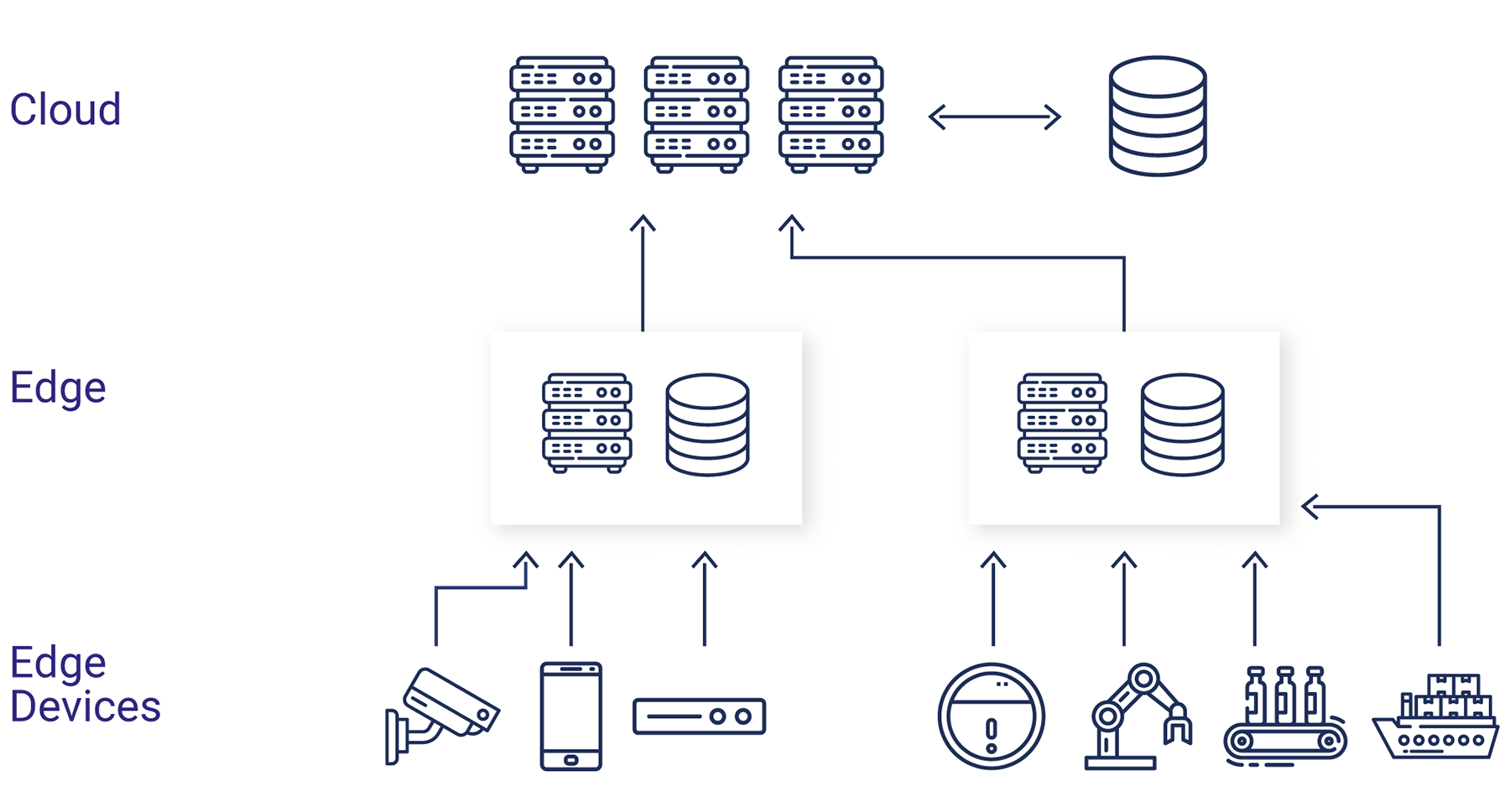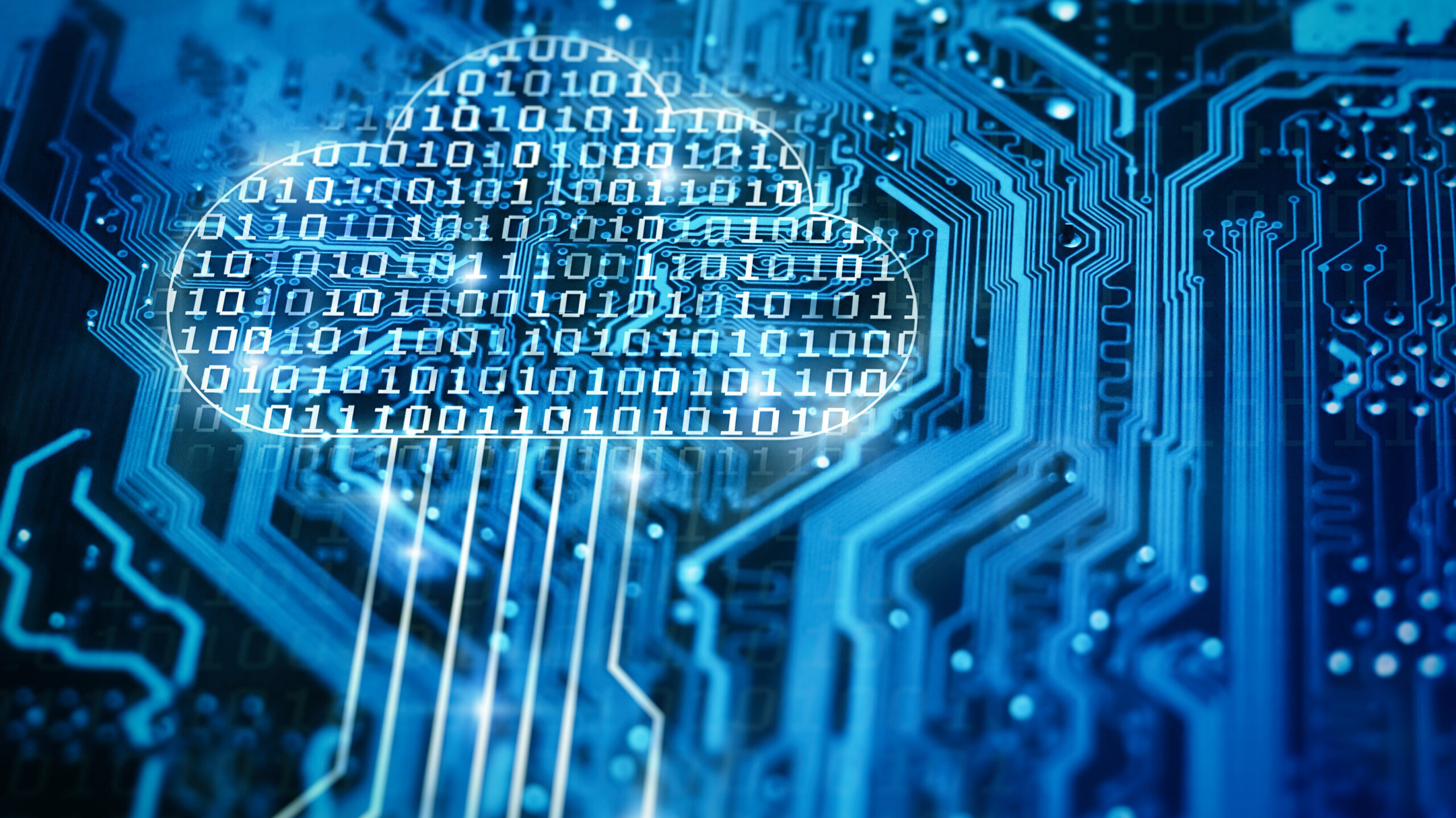Edge Computing and IIoT
IIoT Edge Computing
Over the past decade, big data, AI, digital payments, and a wide range of communications tools have become mainstays in offices across just about every vertical–resulting in fundamental shifts in how brands approach sales, marketing, customer service, banking, and more.
Edge computing stands to bring industry-altering benefits to industrial sectors, like manufacturing, agriculture, and logistics, with a different set of computing needs that spans heavy equipment, IT networks, and the massive amounts of data generated from various Industrial Internet of Things (IIoT) devices.
While there’s a lot of hype surrounding edge computing and its role in “Industry 4.0,” The reality is, edge computing is one part of a larger IoT system, designed to address the latency issues and bottlenecks that come with existing cloud architecture. IIoT edge computing instead allows businesses to process data locally, allowing for continuous monitoring, analysis, and connectivity.
What is Edge Computing in IIoT?
Edge computing emerged in response to the rise of industrial IoT applications. Traditionally, IoT devices collect and transmit information that gets sent back to the cloud. Users can then access and analyze that information using cloud-based software. On a smaller scale–say, you have a handful of surveillance cameras and sensors tracking one or two local machines–cloud-based processing is an effective solution.
Unlike other sectors like tech or finance, industrial organizations can’t rely solely on the cloud to manage their data–there’s just too much of it. You might have sensors embedded throughout the production line, connected robots roaming the factory floor, and devices that monitor safety conditions–all generating large volumes of data. The problem is, as more devices enter the picture, the amount of data transmitted between them increases rapidly, it can overwhelm cloud-based systems.
Eliminating the need to access the cloud to extract time-sensitive insights and make real-time decisions as needed, edge computing reduces the distance between the client and the server. Additionally, edge computing can process data locally, allowing organizations to filter out duplicate or irrelevant data before sending it to the cloud.
Where is “the edge”?
In the Introduction to Edge Computing in IIoT whitepaper, the Industrial Internet Consortium (IIC) explains that the “where” of edge computing is up for interpretation.
Essentially, the edge is defined as a logical layer, as opposed to a physical divide. Vague, sure, but what this means is that the edge represents the physical location that allows processing to happen as quickly as possible. In edge computing, the goal is to make data available (and actionable) in the minimum amount of time.
This means that businesses define the edge themselves based on use cases, objectives, and the problems they’re trying to solve. For agriculture companies, the edge might include acres of land and any territory where drones are deployed to monitor crop conditions. Or IIoT edge computing in a manufacturing setting might be limited to a single building.
Comparing Edge and Cloud Network Architectures
It’s worth mentioning that edge computing isn’t a replacement for the cloud and that both topologies serve their own purpose. The most apparent difference between the two technologies is that edge computing is decentralized, while cloud computing happens at a centralized, remote location.
Cloud computing refers to the delivery of a broad range of applications and services through the internet. Instead of storing data locally on a server or hard drive, data is stored and managed remotely. Users can access resources on-demand, from any device, and updates are automatically synced across all connected accounts, ensuring all stakeholders are working with the same information.
Organizations in all sectors rely on “X as a Service” solutions for data management, real-time visibility, and mobile access to business tools workers use every day–driving fast decision-making, improved business intelligence, and the ability to work remotely.
The cloud offers organizations a lot of flexibility–they can scale up or down as needed and only pay for what resources they use. In an industrial IoT environment, organizations can quickly burn through those resources, which over time, can result in significant expenses.
Additionally, cloud computing can take a few seconds to transmit data to the server. For someone using the Google Drive or a CRM platform, that tiny delay will likely go unnoticed.
However, when you’re looking at applications like self-driving cars, delivery drones, smart grids, and smart factories, there’s a heightened time-sensitivity factor.
With edge computing, connected devices are enabled to process data locally next to the source–or the edge. Processing can happen within the device itself or in a nearby server, which eliminates the speed and latency issues that come with the cloud.
Edge computing should be used to manage resources better, lightening the load in the cloud for better connectivity, fewer bottlenecks, and opportunities for cost-savings. Event-Driven Architecture (EDA) can be helpful to increase asynchronous processing and facilitate scaling. In contrast, the cloud can be used for activities that aren’t time-sensitive.
The challenge here is, getting this right will require an in-depth audit of all processes, followed by carefully mapping out your business needs, challenges, and how these architectures can work together to create a powerful, secure IIoT platform.
The Case for Edge Computing and IIoT Applications
In a general sense, the edge offers some obvious benefits–cost savings, low latency, improved security protections, real-time access to accurate information–at the source. However, to realize those benefits, organizations need to have a clear use case for implementing this technology.
Otherwise, they may end up with a chaotic mess of data with little to no actionable insights. Below, we’ve listed some of the key problems that can be solved by implementing edge computing into your connected system.
- Low latency. When large datasets are transmitted between IIoT devices and the cloud, travel distance, bottlenecks and rerouting can cause delays, leading to potential security and safety issues. Edge computing addresses this problem by bringing the data source and destination as close to each other as possible, enabling faster processing times and real-time analytics.
- Connectivity issues. Edge computing enables continuous uptime in places where intermittent connectivity makes it difficult to reliably access, manage, or back up data. Edge computing is designed to operate under a variety of environmental conditions like sporadic power supplies or harsh weather.
- Time-sensitivity. Often, edge computing is used in applications where data needs to be processed instantly such as autonomous vehicles or performance monitoring. In these cases, devices and software platforms need to be able to extract analytics locally so that decisions can be made on the fly.
- Increased visibility. IIoT edge computing allows organizations to bridge the gap between operational processes and other sources of data like your enterprise resource planning (ERP) system or your CRM. This enables companies to link things like warehouse temperature and maintenance issues to other data sources, providing the context needed to link sensor data to strategic business goals.
IIoT and Edge Computing: How is this Technology Being Used?
According to a survey published in Automation World, 43% of manufacturers have already deployed edge projects, primarily for handling equipment analytics and production data. However, the possibilities offered by edge computing are nearly limitless.
Here are some examples of edge computing and IIoT being used out in the real world.
- Condition-based Maintenance–From aircraft and defense equipment to tractors, forklifts, and the assembly line sensors are being used to detect patterns, vibrations, and other anomalies that catch maintenance issues as they emerge, thus reducing the costs associated with repairs, replacements, and downtime.
- Real-Time Safety Monitoring–Edge computing and IIoT devices allow organizations to monitor worker safety, even in remote locations where connectivity is spotty, at best. This technology is now being used on oil rigs, in mining applications, or in a factory setting where employees might be operating dangerous equipment.
- Facial Recognition Systems–Privacy issues aside, advanced security solutions can identify suspicious activity or dangerous behaviors to help identify potential threats and intervene, if necessary.
- Autonomous Vehicles–Drones, self-driving cars, and other unmanned vessels are loaded with sensors designed to take in its surroundings and respond to unpredictable, ever-changing circumstances.
Characteristics of the IIoT Edge Computing Model
Edge computing operates on a distributed architecture designed to balance the workload between the edge, the cloud, and an organization’s data center.
While there’s no official consensus as to what edge computing should look like, the architecture must meet the following criteria:
- Reliability. Systems must be able to perform according to plan, regardless of the environmental conditions or other variables.
- Interoperability. Devices, sensors, and servers must use the same communications protocols.
Scalability. Edge architectures should be able to increase the number of connected devices as needed. - Security. The system must be able to protect data, prevent cyberattacks, and keep unauthorized users from gaining access.
- Extensibility. Edge architectures must allow users to introduce new devices and capabilities without reconfiguring the entire network.
Wrapping Up
While the promise of IIoT and edge computing unlocks huge opportunities hidden within these complex datasets, organizations need to understand that this technology works best when applied to a clearly defined use case that offers significant value to the business.
Edge computing and IIoT force organizations to rethink their approach to data storage, security, and loss protection, as well as which tasks require the real-time processing power of the edge vs. which can be routed to the cloud.
[adinserter name=”IIoT Closing”]
Recent blog posts

Stay in Touch
Keep your competitive edge – subscribe to our newsletter for updates on emerging software engineering, data and AI, and cloud technology trends.




